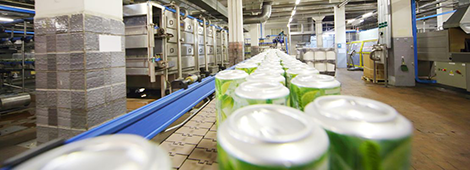
Metals 3D printing keeps the beers flowing off the production line
In the world of German beverage packaging the production 40,000 – 80,000 bottles or cans per hour are not unusual. in an industry thriving on speed. A plant shut down could cost anywhere up to €30,000 per hour.
Finding the fault, requesting a spare part, shipping and installing it – in a worst case scenario can take a few days and result in delays to deliveries to the trade.
Specialists in stainless steel components for beverage filling plants, Jung & Co. Gerätebau, are increasingly relying on metals 3D printing to ensure that these spare parts for beverage filling plants are available faster.
Using a Concept Laser M2 cusing Multilaser machine Jung & Co. is providing a spare parts on demand service.
“Initially our customers thought: What a crazy idea. Far too expensive. Won’t work. So we first had some persuading to do,” says Jung & Co managing director Thomas Lehmann, adding that the process caught on because the economic facts were undeniable.
“A new 3D design and rapid availability saves the customer time and money,” explains Lehmann, giving the example of a filler valve in a can filling plant fitted in the German town of Pinneberg.
Many of these spare parts are not standard components, but rather customer-specific solutions. If it is manufactured by conventional means, the assembly consists of seven components made of stainless steel 1.4404 which need to have the necessary seals added.
The stainless steel parts had to be initially milled or turned with precision machining on CNC machines and then fitted manually. The assembly was then placed into storage so that, in the event of a failure, a quick response was possible and the filling plant could be back up and running again.
“The can filler valve was redesigned so that it could be manufactured in one operation on an M2 cusing Multilaser machine. This means there is no longer any need for the seals and interfaces that are otherwise an inevitable consequence of the joining process.
“The fact that no assembly work is required is not only cheaper, but also saves time for our customers.”
Lehmann claims that manufacturing the part by conventional means takes around 8 – 10 weeks, including the procurement of the required precision cast part, whereas the 3D printed part takes around one week.
“In principle, this means we can manufacture spare parts on demand and then deliver them on time when the demand suddenly arises.
“The benefits that arise with such a precision part are extremely interesting for both us as the manufacturer and for our customers if the desire is to keep overhaul times or machine downtimes as short as possible.”
In addition, spare parts do not need to be purchased in advance and kept in storage, thus tying up less capital.
In the beverage industry, there’s another key argument in favour of the 3D printed parts over conventional cast parts made from stainless steel: cavities are not exactly popular.
In the food industry they are a potential source of contamination and are to be avoided in this particular application, which is another important benefit of the 3D metal printing process.






